- S.D. Eibar ready for maiden La Liga outing
- SD Eibar stengthen ahead of debut La Liga season
- Can ‘Super Mario’ live up to expectations in Madrid?
- MAN IN THE GROUND – Brentford 0 – 4 Osasuna
- Historic Basque derby welcomes S.D. Eibar to La Liga
- Munich to Madrid, via Brazil – Tony Kroos
- Rakitic in Spanish Switch
- Can Spain find redemption in Rio?
- Viva Espana! A season of redemption for Spanish football
- From the old to the new: who can fill the void in years to come for La Roja?
Before the Camp Nou – The early homes of FC Barcelona
- Updated: 11 June, 2012
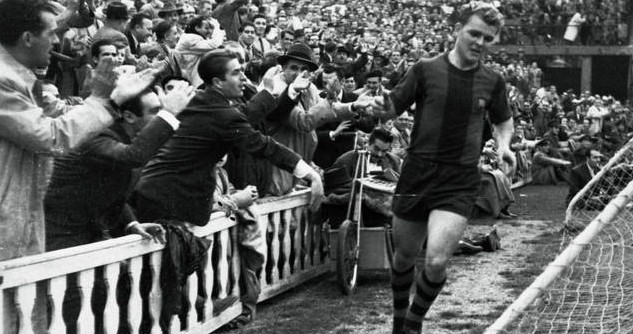
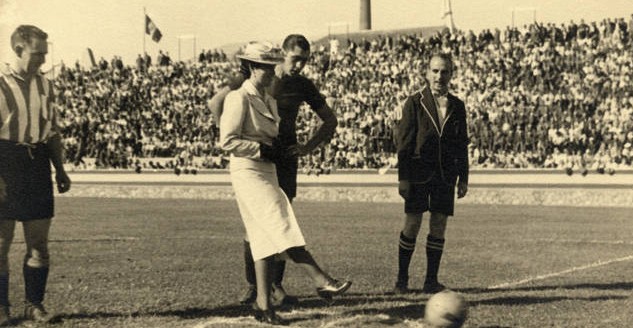 FCBarcelona.com
FCBarcelona.com
We are all familiar with the iconic Camp Nou, home and the very heartbeat of the world’s biggest club. But what of the other stadiums has Barça used? Well I’m glad you asked as we are about to look at the seven other stadiums the club has used in the 58 years prior to its move to their current home.
Between 1899 and 1909, Barça would play at five different grounds, starting with Velódromo de la Bonanova and then a year later, they moved to Campo del Hotel Casanovas. Both were extremely basic grounds with a roped-off dirt pitch. During 1901, the club moved to Campo de la Plaza de las Armas, another simple ground, before settling down for a few years at Campo de la Carretera de Horta.
This was the first ground that resembled a football ground, with a short stand on halfway and bleachers on the remaining sides of the pitch. In 1905 the club moved to Campo de la Calle Muntaner, which was slightly larger, but if anything, more basic than Campo de Horta. The reason for all the moves in the early years was due to the rapid expansion of Barcelona and any open space was quickly swallowed up for housing or commercial use.
In 1909, with the help of local businessmen, Barça purchased their first ground at Calle de Industria. He also signed new players and membership grew to 10,000 socios by 1914. The ground at Calle Industria would be known as L’Escopidora or the Spittoon and was inaugurated on 14 March 1909 with a league match against Català SC. In the next match at L’Escopidora, Barça regained the Campeonata de Catalunya and the first Golden era of the club was under way.
The ground was a revelation at the time with its twin decked stand and initial capacity of 6,000. It was also the first ground in Spain to experiment with floodlights. Such was the popularity of the team that the ground was bursting to capacity whenever Barça played, so much so that some supporters had to sit on the perimeter wall.
Passers-by would see the ungainly sight of the fans backsides hanging over the edge of the wall and nicknamed the supporters “culés”, that’s “arses” to you and me, and the name has stuck.
As Barça’s success continued on the pitch and the number of socios grew, it became apparent that L’Escopidora was never going to be large enough for the club’s needs, so in February 1922 work started on a new stadium in the Les Corts district of Barcelona.
The new stadium would have an initial capacity of 22,000 and opened on 20 May 1922 with a 2-1 victory against St Mirren. Les Corts staged the 1923 final of the Copa del Rey between Athletic Bilbao and CE Europa and La Seleccion played Austria at the venue in December 1924. However, three years later the club and the stadium were at the centre of a national storm.
The club continued to be at the forefront of Catalan fervour and when Spanish Leader Primo De Rivera attended a match in June 1925, the crowd gave him and the Spanish National anthem the bird.
The band from the Royal Marines who had been invited to provide the musical entertainment, were somewhat flustered by the commotion and cut short the Spanish anthem and played “God Save the Queen”, much to the delight of the partisan crowd. Primo De Rivera, showing the sort of humour one associates with dictators, ordered that the ground should be closed for three months and forced Joan Gamper to resign as president.
Such was the clubs popularity due to their dominance in the Campeonata de Catalunya and Copa del Rey in the mid-Twenties, that the club needed to extend the stadium. In 1926 a new cover was added to the west side and terracing was extended on the other three sides.
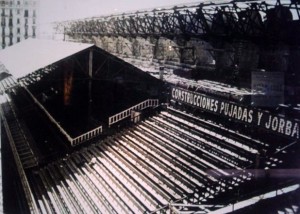 Les Corts new capacity was 45,000 which was tested to the full when the club won theinaugural Spanish League in 1929. However, the first golden era was about to come to an end, and with no national titles during the thirties and the small matter of the Civil War, Barça’s world had switched from light to the darkest of shadows.
Les Corts new capacity was 45,000 which was tested to the full when the club won theinaugural Spanish League in 1929. However, the first golden era was about to come to an end, and with no national titles during the thirties and the small matter of the Civil War, Barça’s world had switched from light to the darkest of shadows.
A month after the start of the war, Club President Josep Sunyol was murdered by Falangist soldiers and the following summer, the team went into exile, touring the USA and Mexico.
Ironically, it was the money raised from the tour that secured the club’s future, but when they finally returned in late 1938, it was a very different Catalunya they encountered.
With membership below 3,500 and their club offices destroyed, the club suffered the further indignity of Franco’s Nationalist regime removing all forms of Catalan identity from club.
The club’s name was changed to Club de Fútbol Barcelona, the President was appointed by Franco and even the Catalan flag was removed from the club crest. Franco was however unable to change the fans, and soon Les Corts became the only place where Catalans could gather en-mass to celebrate their identity.
Despite the regime’s best efforts, the 1940’s were a successful period for Barça and another put-upon club, Athletic Bilbao. Buoyed by the improving finances the club set about the further and most spectacular development of Les Corts.
In 1944, the existing terracing was extended raising the capacity to 60,000, but the most impressive work took place on the west side. Designed by Eduardro Torrojo, an incredibly advanced, deep cantilevered roof was erected behind the existing cover. Gimnastic Tarragona purchased and dismantled the old stand and on 2 June 1945, El Nastic played Barça in a friendly to mark the opening of the expanded stadium.
The new roof was among the most advanced in Europe. Its curved underside was ribbed with metal cladding and hung low over the seating like the tail of a giant alligator. Les Corts was the largest and most spectacular stadium in Spain throughout the forties, and it would witness the emergence of the next great Barça team in the mid 1940’s and the arrival of Hungarian great Ladislau Kubala in 1950.
League titles followed in 1952 & 1953, but by the time floodlights were erected in 1954, the club had already decided that the stadium could not cater for their ever expanding support.
No doubt prompted by Real Madrid’s development of Chamartin, (soon to be called Santiago Bernabeu), the club purchased a large expanse of public gardens and allotments in the west of the city, and in March 1954, the first stone was laid at the Camp Nou.
The move away from Les Corts was necessary if the club was going to compete with the great Real Madrid side of the 1950’s, but it was dependent of selling Les Corts for housing. This proved to be a problem for several years as the municipality was keen to keep some green space in the city. In 1963 it relented, but it took a further two years for the government to sanction the demolition and sell of the land.
All this time, whilst Barça were running up a crippling debt following the construction of the Camp Nou, things were not exactly great on the pitch and many questioned the decision to build such a large stadium. Finally, in February 1966 demolition started on Les Corts and three months later, the site was sold for 226 million pesetas. The entire sum received from the sale was used to pay off the club’s debts.
The first team played their last league match at Les Corts in 21 April 1957. Kubala scored the last goal in 1-1 draw with Sevilla that saw the Andalucians qualify for Europe at Barça’s expense. CD Condal carried on using the stadium until 1965 and in 1970, merged with Barcelona B.
__________________________________
To read more on the footballing stadiums of Spain, visit Chris’s excellent site Estadios de fútbol en España
Follow @icentrocampista

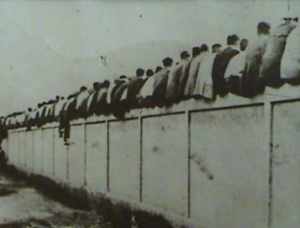
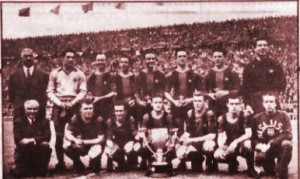
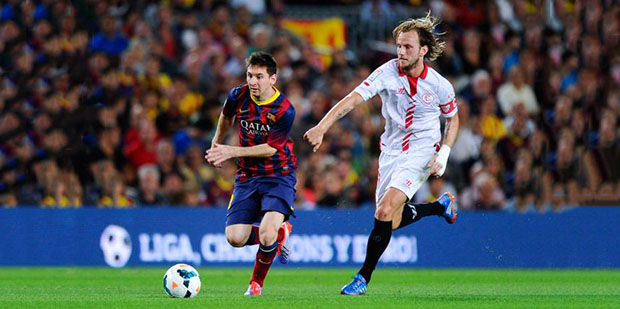
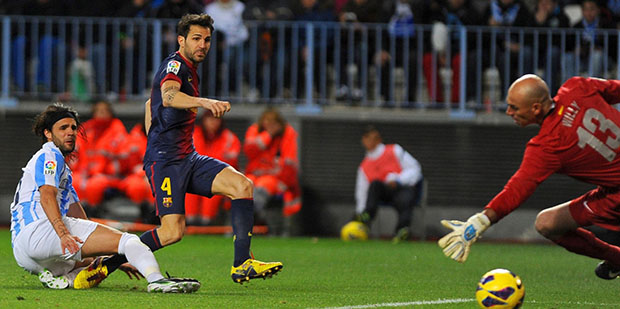
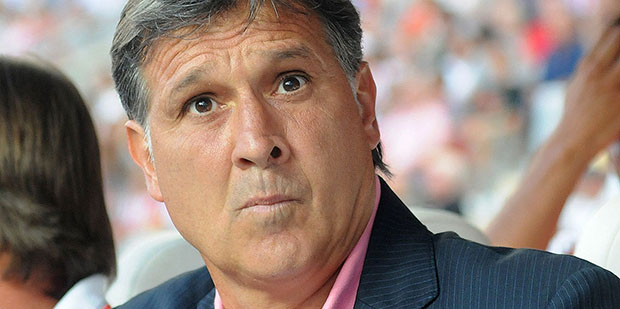


2 Comments
You must be logged in to post a comment Login